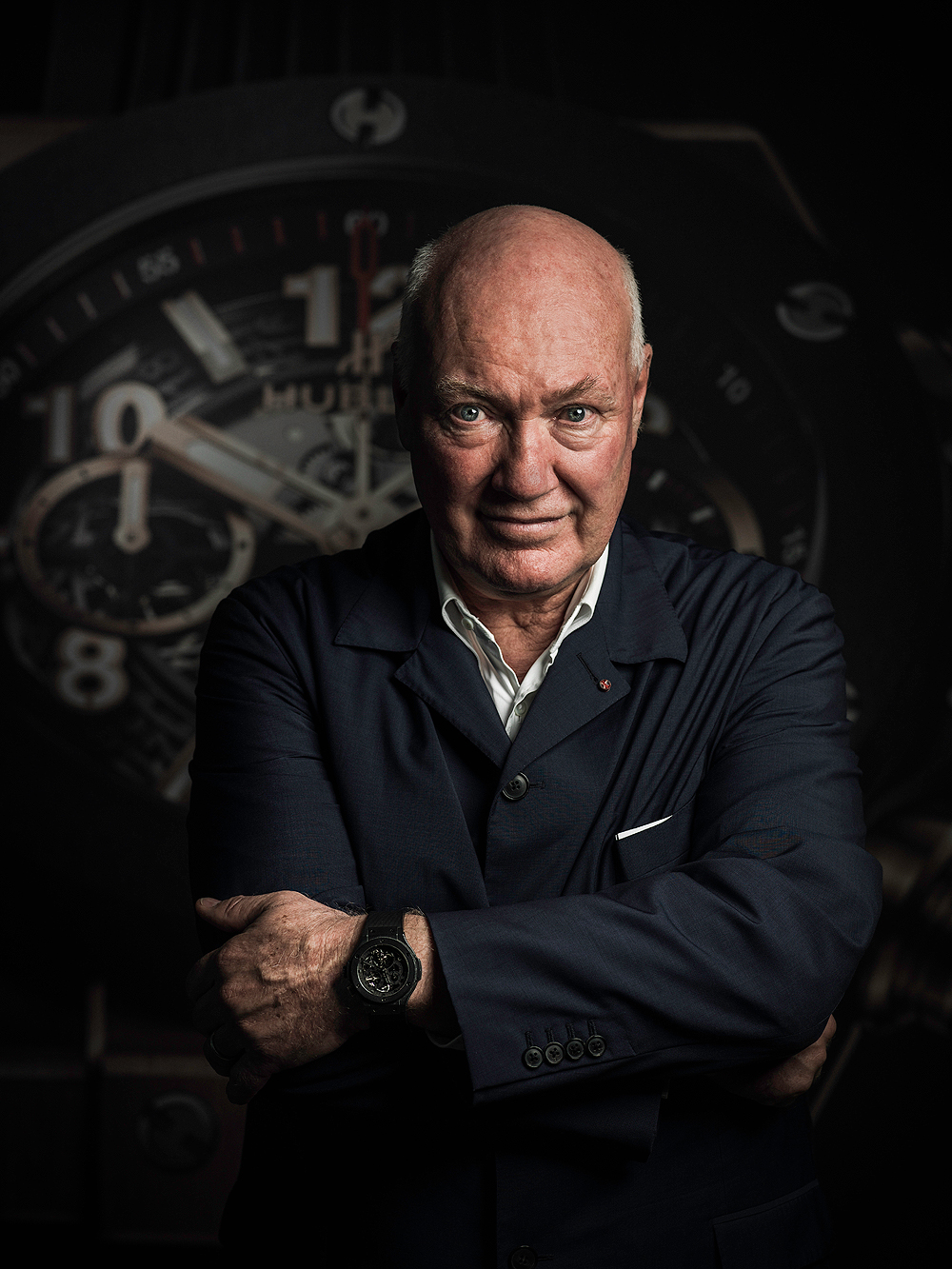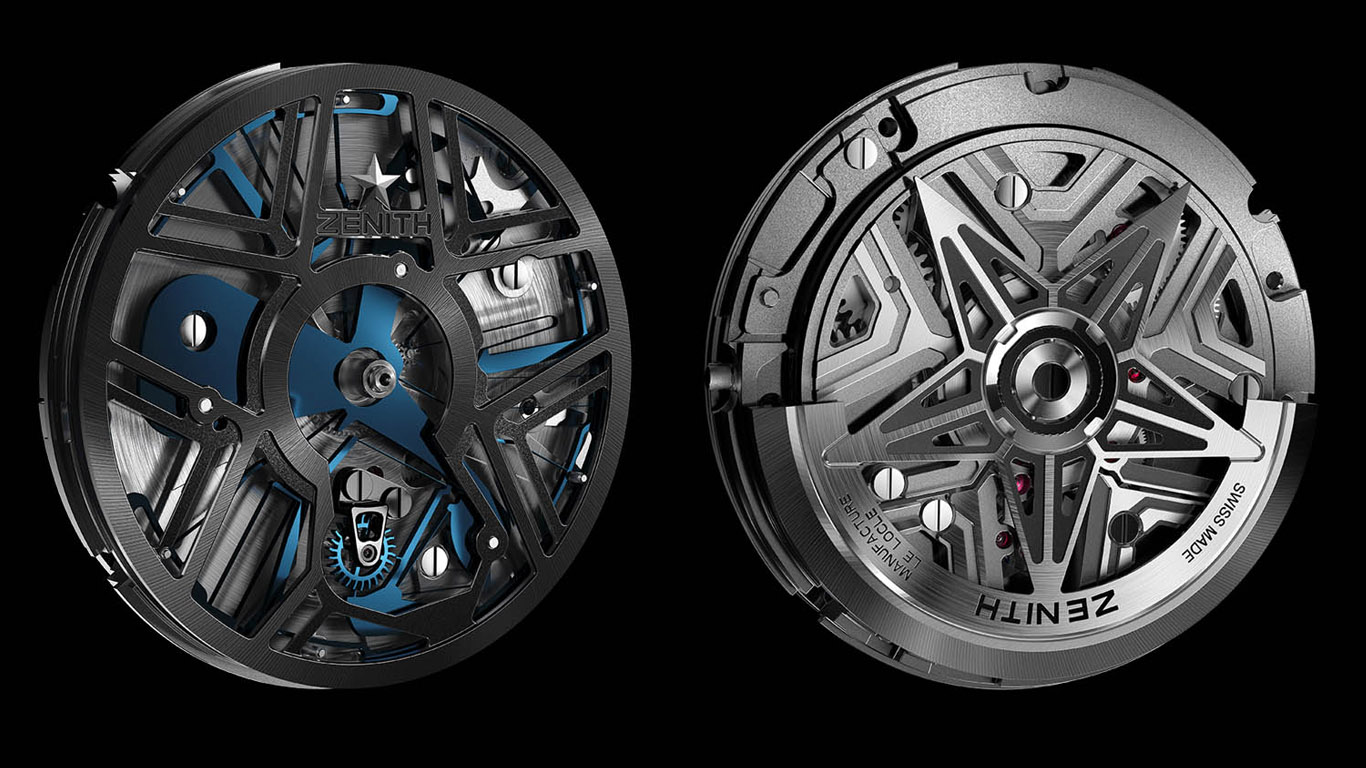As WatchTime readers are well aware, 2017 has been an interesting year in the watch industry and it’s anybody’s guess what 2018 will bring. One industry figure who’s never shy about voicing his views on the present and future of the watch world is Jean-Claude Biver, LVMH Head of Watchmaking, who is in charge of charting that future for Hublot, TAG Heuer, and Zenith. I had the opportunity for a brief chat with Biver during the grand opening ceremonies for Hublot’s Munich boutique (and the launch of the Big Bang Bavaria model, which I covered here), in which I got his take on several issues of interest to watch aficionados and followers of watch-industry news.

WT: As we approach the start of a new year for the watch industry, is there any development in that industry that surprised you this year?
JCB: Not really. I was convinced that the Apple Watch would be successful and was probably one of the few people who had foreseen that success since the first day. The revolutionary new oscillator that Zenith rolled out in its Defy Lab probably surprised many others but not me, because I have been involved in its development for the last four years since I made the investment to study it! The fact that the Swiss watch industry has started to recover didn’t surprise me, because the economies of most all the countries in the world — Brazil, Colombia, Mexico, Japan, China, Hong Kong, America and Canada, even Europe — all are recovering. When economies recover, consumption takes over again. So the fact that we had a better second half of the year than first half is also, in that sense, not a surprise.
WT: Looking forward to 2018, what should both watch consumers and those of us in the media who cover the watch industry be expecting?
JCB: Firstly, we must take advantage of Apple. An Apple Watch is probably one the best promotions we [as an industry] can get.
WT: Really? How so?
JB: Because if you want to sell a pair of shoes to someone who for 30 years has never worn shoes, it is more difficult to sell him a hand-made leather shoe than to sell him a pair of sneakers. If you have been wearing an Apple Watch since you were 15 years old, and you have changed it every four or five years for a new one, and you bought the red strap, and then you bought the Hermès strap, you will, one day, be ready…
WT: To upgrade?
JCB: Not to upgrade, but to have something different. To say to yourself, “Oh, I saw this mechanical watch, which they say is an eternity on the wrist. It seems that it will always work. It seems that even if I sell it after 10 years my kids can make a profit. Oh, darling, for our 50th anniversary I would like to buy such a watch!” So it’s an indirect promotion. The generation of the ‘90’s and the first 10 years of 2000 — how have they been educated? With Swatch watches, in different colors, in two, three, four, or five versions. You change your clothes, you change the color of the watch. So these kids, when they became 30 years old, they were ready to buy a watch because they are born with a watch on their wrist.

WT: To focus on the brands that you are responsible for, and homing in first on Hublot, you seem to have expanded the Hublot “fusion” concepts — the modularity and innovative materials — to TAG Heuer and Zenith as well. In light of that, what are you doing to keep Hublot unique?
JCB: Hublot will always be ahead of the others in the materials because it’s that brand’s specialty. Just because many brands are making powerful engines, it doesn’t mean that Ferrari will lose its iconic reputation for powerful engines. And we must not forget that the watch industry has developed in parallel to the development of metallurgy. New metals have been created that are able to produce more quality in watch movements. I’m not talking about the outside here, but the inside.
WT: You’re referring to the use of materials like silicon?
JCB: Like silicon springs for their anti-magnetism. Also, the rubies: the day we invented the synthetic ruby, we replaced the natural ruby. The natural ruby was never good because it never had enough purity, and when it’s not pure the ruby can break. Again, So — again, we are taking about their use inside of a movement rather than in jewelry — synthetic rubies are better than natural ones. So we have always been innovating. We have a metallurgy department because I knew that metallurgy is the way to build the future. Any watch brand that isn’t investing in that is missing something. I cannot say to Zenith or to TAG that this is forbidden because these innovations belong to Hublot. Metallurgy belongs to the watch industry. This is why we have created the R&D Institute at LVMH. The bosses of Hublot, TAG Heuer, and Zenith are all members and they are all sharing knowledge.
WT: You mentioned the Zenith Defy Lab movement, an amazing innovation. How do you choose which LVMH brand gets which new innovation?
JCB: It’s easy. What was the major improvement in the new [Defy Lab] escapement? The oscillator. What is important about it? Its high accuracy – one second in 24 hours. It’s the most accurate mechanical watch in the world. What brand should I give it to? To Zenith. because it was always part of that brand’s philosophy part of its DNA, to do high-accuracy. Zenith has won 2,232 first prizes in the grand prix of chronometry, and it is the only brand that has won that many prize for accuracy. Zenith has always been, throughout its history, obsessed with accuracy, which was not always the case with TAG Heuer or Hublot. They also tried to make accurate watches, but it was not their main task.
WT: Should the LVMH watch family, which you’re in charge of, grow larger? Would you like to see more brands in the fold?
JCB: Yes and no. Yes if there are other brands that we can acquire and that fit into the stable. But I don’t see any that are available.
WT: What brand would be a good fit, in your opinion?
JCB: Rolex. (both laugh) No, clearly, there are many prestigious brands, but for high complications we have Hublot, we have Zenith, and even within TAG Heuer we have watches like the Monaco V4, so we may already have enough within that range.
WT: Of the brands that are not part of your LVMH stable, which do you most admire what they’ve done in the past few years and why?
JCB: I admire Patek Philippe. I also collect Patek Philippe and have bought many of their recent innovations. I also admire somebody whose products are very different from Patek’s, who is Richard Mille. He has done a lot to bring a new look to the watch industry. I admire brands that have maintained their tradition and their exclusivity — even if they had the temptation to make too many watches or grow too fast.

I agree, entirely, with Mr Biver’s view regarding our world youth ‘s perspective on watches.
As a 73 years old watch collector from Breguet to Tissot, my grandchildren certainly have the same view described by Mr Biver on watches, however someday some 30 years from now ,I know they will argue over my collection!
that does not change!!!
With all due respect, teenagers are not born with watches on their wrists but carry Smartphones which tell them the time so they feel no need for a watch. The battle the watch industry has today is to convince those teenagers to wear watches instead of relying on their Smartphones to tell them the time. Personally, I prefer wearing a watch but none of my four grandkids nor their friends do.
LOL! Here is what he said about the Apple Watch back in 2014, “This watch has no sex appeal. It’s too feminine and looks too much like the smartwatches already on the market. To be totally honest, it looks like it was designed by a student in their first trimester.”
Yes, but when will the DefyLab production version be released?